Colleen Mondor's Blog, page 11
January 20, 2014
With "natural treasure map" in hand...
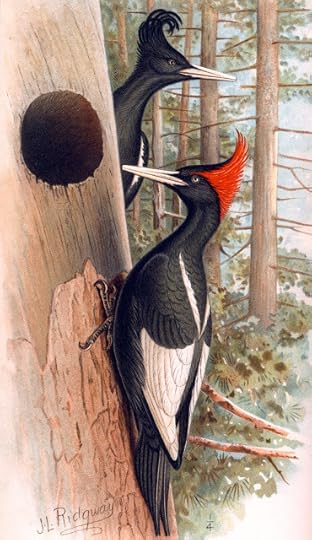 I reviewed Imperial Dreams by Tim Gallagher last year for Booklist (it received a star and I loved it), but as it has been selected to the Editor's Choice for a Best Book of 2013 (and a top ten in the Science & Health category), I wanted to revisit it here.
I reviewed Imperial Dreams by Tim Gallagher last year for Booklist (it received a star and I loved it), but as it has been selected to the Editor's Choice for a Best Book of 2013 (and a top ten in the Science & Health category), I wanted to revisit it here.
Gallagher is the Editor-in-Chief of Living Bird, the magazine for the Cornell Lab of Ornithology. He also tracked and wrote a book about the Ivory-billed Woodpecker which I thought was pretty good as well. For his latest title, he traveled to Mexico in search of the Imperial Woodpecker which has not been declared extinct but also hasn't reliably been seen in 50 years. All of that would be daunting enough except the habitat for the Imperial Woodpecker happens to be very difficult territory to traverse. It's also right in the heart of Mexico's drug territory, so if the mountains don't get you then the drug lords will.
But the bird could be there and Tim Gallagher really wants to find it; he really wants to know that this bird is still alive.
Imperial Dreams is a lot of things but mostly it is really excellent writing. There is natural history here, the story of a bird that was TWO FEET long, but also a travel story and an adventure story and an introspective tale about a man and his friends and a maybe, possibly, doomed quest that no one can let go. Gallagher wades deep into the territory of Pancho Villa and Geronimo, giving readers some history here, some cultural awareness there, plus a moment or two where he had downright fear-for-your-life type thoughts. It's all good, promise.
If you asked him, I bet Tim Gallagher would say that Imperial Dreams is all about a bird and because this bird is so amazing, that would be enough for any book. But as I read more of his work, I am realizing that where Gallagher is going is not so much into the field in search of birds, but into his own heart, into our collective hearts, into the places where a beautiful bird still matters.
In elegant and entertaining prose, Tim Gallagher is reminding us what matters. The Imperial Woodpecker is one of those things and if we have lost it forever, then the world really ought to weep.
You can read more about Gallagher's work and the Imperial Woodpecker at his blog.

January 17, 2014
On WWII, Bombing and Poetry
 During WWII 110,000 men were trained by Bomber Command in England's RAF. Of them, 50,000 were killed and 15,000 suffered serious casualties. These are the men that that Daniel Swift writes about in Bomber County: The Poetry of a Lost Pilot's War. Swift visits the sites of former military bases where the men were trained, attends reunions and speaks to veterans. He is hoping to understand just what it was like to be part of such a dangerous and dangerously destructive group. He also hopes to find out more about his own grandfather who was killed in action as part of a Lancaster crew in 1943.
During WWII 110,000 men were trained by Bomber Command in England's RAF. Of them, 50,000 were killed and 15,000 suffered serious casualties. These are the men that that Daniel Swift writes about in Bomber County: The Poetry of a Lost Pilot's War. Swift visits the sites of former military bases where the men were trained, attends reunions and speaks to veterans. He is hoping to understand just what it was like to be part of such a dangerous and dangerously destructive group. He also hopes to find out more about his own grandfather who was killed in action as part of a Lancaster crew in 1943.
And then, there is also the poetry.
Of the men in his grandfather's crew, only his body was recovered, after it washed ashore and was later buried in what turns out to be a grave basically impossible to find. (Some of the book is about visiting cemeteries.) The author's father was only 3 when the crash happened and seeks his own emotional closure; they both wish they knew more about the lost airmen and they both discover, eventually, that what they have is mostly all they will ever get.
But learning about the war and the men who flew the bombers and reading what has been written by those in the bombers, goes a long way toward showing Swift what it was probably like for his grandfather. And all of this investigating also means that he learns a lot to share with readers. Here's a bit:
Bombing was to the Second World War what the trenches were to the First: a shocking and new form of warfare, wretched and unexpected and carried out in a terrible scale of loss. Just as the trenches produced the most remarkable poetry of the First World War, so too did the bombing campaigns foster a haunting set of poems during the Second. But this is not simple process, for they are not equivalent geographies. Bombing, if we take the whole of it, is always double. It was a kind of war conducted in the cities and the planes, shared between the bombers and the bombed, and so it asks a split reckoning, a thinking in two places. 'Children look up,' wrote Cecil Day Lewis: and think upon the bombers above.
I think we have gotten a bit blasé about war poetry; we are used to having our hearts torn, we expect it to be intense, we expect it to be serious. But what Swift discovers is that the poetry of bombing was too extreme for many--bombing itself was too extreme for poets at first (lots of quotes from Virginia Woolf and others in England who were at a loss as to how to write about the London bombings). As horrific as the trenches were, it was still warfare between soldiers. In the bombing campaigns of WWII we saw the first large scale fighting against civilians and that changed everything, even for poets.
Bomber County is not a breezy read; Swift gets a bit academic at times although not overly so. I would have loved this book in college; it fits perfectly in several courses I took about understanding war and considering the inner thoughts of the men who fought it. I especially liked that it was about aircraft crews because I think very little (comparatively) has been written about their war experiences and the many personal parts about Swift's grandfather (quotes from letters, etc.) were quite moving. It's poetry like this though, from Randall Jarrell, that stopped my reading in its tracks:
In bombers we named for girls, we burned
The cities we had learned about in school--
Till our lives wore out;
I could read those lines forever and they never get easier, which I suppose is the best thing that war poetry can do.

January 14, 2014
The Sea Detective by Mark Douglas-Home is my new Travis McGee
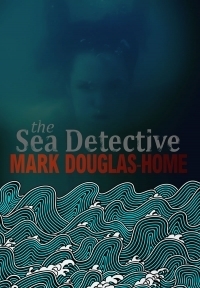 The Sea Detective caught my attention in Booklist because the protagonist, PhD oceanography student Cal McGill, professionally studies "flotsam and jetsam". I have reviewed several books on this subject from Loree Griffin-Burns' YA title Tracking Trash to Donovan Hahn's Moby-Duck, plus I grew up on the water and have been collecting odds and ends from the beach forever.
The Sea Detective caught my attention in Booklist because the protagonist, PhD oceanography student Cal McGill, professionally studies "flotsam and jetsam". I have reviewed several books on this subject from Loree Griffin-Burns' YA title Tracking Trash to Donovan Hahn's Moby-Duck, plus I grew up on the water and have been collecting odds and ends from the beach forever.
So I was very excited to read about the exploits of Cal McGill.
Mark Douglas-Home sets the novel in Scotland and it opens with the drowning murder of a young girl from India. Flash forward three years and McGill is doing a little trespassing for an environmental cause. In short order the reader learns that he has a recreational habit of messing with the minds of politicians, he's wicked smart, and his doctorate involves tracking a lot of stuff that falls off ships from containers to oil spills (it's also how he earn cash). Slowly, Douglas-Home brings the story of the dead girl into McGill's radar while also introducing a subplot about his grandfather who was lost at sea during WWII (which explains some of McGill's obsession). There are several bad guys, a very unusual cop who gets a decent amount of attention from the author, some severed feet that wash ashore (unrelated to anything but still interesting - oddly it happens a lot, there was just one in Florida), and a HUGE revelation about McGill's grandfather.
And Cal's ex-wife shows up, but that goes about as well as you expect.
Douglas-Home gives a lot of back story in The Sea Detective and in the early chapters that can get a little hard to follow. The threads of the plot require juggling not only the dead Indian girl but also the local police detective who is dealing with an ass of a superior, McGill and the small town where his family came from who have a lot invested in keeping the truth behind his grandfather's death hidden and even a tabloid reporter trying to work an angle at McGill's expense. I assume this will get a bit easier in future installments as the back story will have been told (it reminded me of the first Maisie Dobbs book in that respect).
But that is just a minor quibble; I loved the setting, I thought Cal McGill was fascinating and utterly unique and the historical mystery blends well with the horrors of the modern story. There is a wry cynicism to McGill that reminds me of Travis McGee but he's also whip smart while not being too jaded, so there's your Spenser. (There can be no higher praise from me then favorable comparisons to these two characters.)
There is a second book that just came out in the series, The Woman Who Walked Into the Sea and I'm really looking forward to reading it. As soon as I get far enough ahead in my columns, etc., I'll be buying a copy. (A third is due this year.)
The Sea Detective reviewed in The Scotsman. And here are a couple of reviews of The Woman Who Walked Into the Sea: The Herald and the Library Review.

January 13, 2014
Russell Hoban believed turtles should be set free
[image error]I read a lot of books for adults that I often end up recommending for teenagers. I was the kind of kid that read above my age early on and especially as a teen I was reading John MacDonald and Robert Parker mysteries and a ton of SFF all of which were published for adults. None of this should come as a surprise to most readers - those age categories are all too often nebulous at best (especially for nonfiction) but on occasion I read something that really can only be appreciated by adults. It's not because of the obvious (sex & violence) but because of the nature of the story.
Simply put, there are some thing you can not understand until you live a lot longer than 17 years.
Russell Hoban's (Bread & Jam For Frances Russell Hoban!) Turtle Diary is about two people who independently decide to set some sea turtles free from a local aquarium. Set in London, William is a bookseller and Neaera is children's book author and both are largely respectable and unremarkable people. They certainly aren't the lawbreaking sort. William is recently divorced and missing his life and suffering a mid-life crisis of mammoth (but largely silent) proportions. Neaera, by her own description, "looks the sort of spinster who doesn't keep cats and is not a vegetarian. Looks....like a man's woman and hasn't got a man."
First, it's not a romance. This is not about William and Nearera finding each other and making mad passionate love as the turtles find freedom. It's more about finding friendship and kinship and meeting someone who thinks your big crazy idea makes sense. It's an incredibly quiet book but a very powerful one because it makes so much sense. It's about making the kind of life you want out of the one you are living.
And turtles. It's also about turtles.
The rescue involves the London Zoo where three very large sea turtles have been living for decades. While it is not squalor or abuse they are dealing with, William and Neaera feel the animals are living stifled lives; it's simply not fair that giant sea turtles should be stuck in a tank for people to gawk at. Each wants to set the turtles free and each encounters their caregiver, George who quietly encourages them. Through alternately chapters readers follow the two as they inch along toward a plan and meeting each other. Along the way bits and pieces of their lives are revealed until, when the rather madcap adventure takes off, it makes perfect sense that these very sedate people would do something so rash and inexplicable.
Turtle Diary has been reissued by the New York Review Books and so, of course, it's a gorgeous edition. The intro is written by Ed Park which I thought was bit stiff for all of the book's sly humor, so don't judge the novel from those pages. It's a quiet read, a careful read and a very sweet one. But mostly it is a book that can not be fully enjoyed until you are of an age that knows what it is to need an adventure; to need to do something to shake yourself out of your life.
Could a teenager read Turtle Diary? Sure. But I think it takes an adult to truly appreciate it and all that William and Neaera need from setting something free.
Here's a trailer for the movie that was made in 1985 and if you like it, the whole thing can be watched on YouTube. (I haven't see it yet but with Ben Kingsley & Glenda Jackson I don't see how it can fail - the trailer sells it, big time!)

January 10, 2014
Brian Kimberling's Snapper Showed Me Indiana
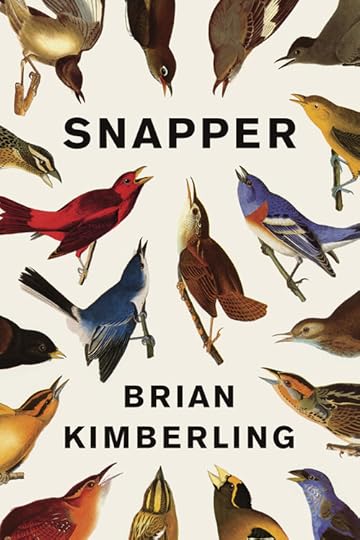 While I'm not a 100% "judge a book by its cover" kind of reader, Snapper certainly caught my eye from across a crowded aisle at ALA Midwinter. It's not only gorgeous to look at though, it's also appropriate as the protagonist, Nathan Lochmueller, studies birds in his native Indiana. Readers follow Nathan in these linked chapters (there's really no big narrative arc to speak of) as he deals with romance issues, job issues, family issues, vehicle issues and a big love/hate relationship with his state. All the while he his studying birds and sharing inside information on the birding life.
While I'm not a 100% "judge a book by its cover" kind of reader, Snapper certainly caught my eye from across a crowded aisle at ALA Midwinter. It's not only gorgeous to look at though, it's also appropriate as the protagonist, Nathan Lochmueller, studies birds in his native Indiana. Readers follow Nathan in these linked chapters (there's really no big narrative arc to speak of) as he deals with romance issues, job issues, family issues, vehicle issues and a big love/hate relationship with his state. All the while he his studying birds and sharing inside information on the birding life.
So yeah, GREAT cover!
Without a big plot point - the romance is up and down, the job issues are up and down and there are no bodies discovered in the woods - Snapper keeps you with Nathan's voice. He's funny, often sarcastic, sometimes wry and always noticing things about the people and places around him (which makes sense as he studies birds for a variety of agencies).
There is some talk of politics here and a few slight digs about the difference between the Midwest and South (in the way of telling a few family stories). And there is some noticing of differences found in small town versus large illustrated quite sweetly at one point by a sojourn into the lives of the fine folks of Santa Claus, Indiana, where every Santa letter gets answered by the denizens of the local diner.
Basically, Nathan spends the book trying to find himself and the reader is along for the ride. This doesn't sound like much - it sounds like one of those exceedingly dull books about nothing in fact - but Snapper is funny and Nathan does evolve and Kimberling manages to make Indiana such a big part of the story that you feel like the state's identity is a character as well. Here's a bit:
I doubt anyone outside Southern Indiana knows what a stripper pit is. They don't exist anywhere else. This is sometimes embarrassing for me in conversation, if I say I spent many a happy adolescent hour there. People think I'm talking about Thong Thursdays at Fast Eddie's. The British Broadcasting Corporation once sent a reporter by boat to Evansville to investigate the wild ways of the inhabitants--the kind of thing they used to do in "deepest Africa," I think. We are Hoosiers after all.
A stripper pit is what remains of a bituminous coal mine, so, as explained in the next paragraph, this his how you get a lake spontaneously in the midst of some woods. Lest you think these are beautiful landscapes, Nathan explains, "At the bottom of those lakes you'll find old refrigerators and stolen cars and bags of kittens. It is Southern Indiana."
So what happens in Snapper? Nathan and his friends grow up, some amounting to something and some not. He does a lot of observing of birds and people and a lot of thinking about his on again/off again relationship with Lola. Eventually he moves away and finds the right girl and grows up (mostly). It's a life like a million others in America and in most every single way it is not the least bit special.
Except Brian Kimberling knows all of them are, and that's why Snapper is really such a great book.

January 8, 2014
Catalogging Consortium Spring 2014
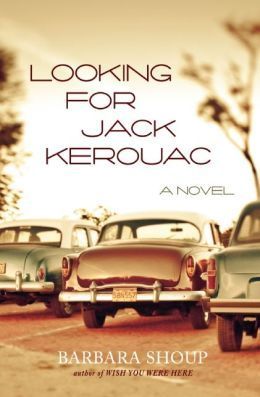 Several titles caught my eye in the Consortium catalog - here's a peek:
Several titles caught my eye in the Consortium catalog - here's a peek:
1. She Wore Red Trainers: A Muslim Love Story by Na'ima B. Robert (Kube Publishing). This YA title introduces Ali and Amirah (who wears red trainers/sneakers). Ali is dealing with the death of his mother and "exploring his identity as a Muslim". Amira has sworn never to marry but...well, they fall hard for each other (of course!). This one is billed as a "unique romance that explores the possibilities and passions young Muslims face when falling in love." I'm hoping the characters are compelling, though they kind of had me with the Converse high tops on the cover.
2. Men Explain Things to Me by Rebecca Solnit (Haymarket Books). This short (100pgs) NF title (an essay really) is just what it sounds like - Solnit's take on "conversations between men who wrongly assume they know things and wrongly assume women don't." It is apparently the origin of the term "mansplaining". (Plus, REBECCA SOLNIT. Do you really need to think twice about anything with her name attached to it?)
3. Jam Today Too by Tod Davies (Exterminating Angel Press). I am endlessly attracted to cookbooks and just so not good at cooking. I have big dreams to eat well and eat interesting things but it never seems to happen. I don't know why this is, but it is. Anyway, Davies has created not just a cookbook but a memoir discussing new ways to "cook and enjoy a meal with friends, family and even beloved pets, during the best and worst time." How can you resist?
4. The Stonehenge Letters by Harry Karlinsky (Coach House Books). A mystery with photographs and illustrations wherein a psychiatrist in the Nobel Museum finds letters from famous people providing explanations as to why Stonehenge was built. Apparently they were responding to a contest in Nobel's will (open only to Nobel laureates) with a prize to whoever solves the mystery of Stonehenge. That's a pretty unusual novel premise!
5. Looking for Jack Kerouac by Barbara Shoup (Engine Books). BARABARA SHOUP! A YA title set in 1964 that involves a road trip by some Kerouac fans down to St Petersburg, FL to find their hero (who really lived there at the time). I don't know how to begin with the proposed wonderfulness of this book (great cover too!) but Barbara Shoup + Kerouac for teens just sounds great.
6. Ancient Oceans of Central Kentucky by David Connerley Nahm (Two Dollar Radio). First, the title itself is great and hard to beat (it's what grabbed my attention). Leah's little brother Jacob disappeared when they were young, now a grown man shows up at her job and claims to be him. Back to childhood memories and figuring out what happened for Leah! It's described as a "wrecking-ball of a novel that attempts to give meaning and poetry to everything that comprises small-town life in central Kentucky." I do not think there are enough novels set in Kentucky, (where the author is from), so nice to see this one.
7. Red Love: The Story of an East German Family by Maxim Leo (Pushkin Press). Leo's memories of growing up in East Germany with his rebellious parents and the questions he seeks to answer about why their marriage did not last are what fuels this title. Mostly, I'm attracted to the idea of growing up in a country that no longer exists - which is so far from my own experience it might as well be another universe.
8. Domestic Arrangements by Norma Klein (Ig Publishing). Another entry from Lizzie Skurnick Books. I love Norma Klein so much - she was hugely important to my teen years. This one is about Tatiana, who becomes famous for filming a nude scene at 14 in a major movie. "A stunning example of Klein's fearless take on the complexities of adolescence..." The intro is written by Judy Blume.
Do I really need to say anymore? I didn't think so.
9. Point of Direction by Rachel Weaver (Ig Publishing). A psychological thriller in remote coastal Alaska about a couple hired to be caretakers at a lighthouse. Things do not go well - of course! Obviously the AK setting has me on this one and although I don't know if they identify it as such, the cover pic is of Eldred Rock Lighthouse in Lynn Canal, which is just really cool. (Not too remote though - the ferry goes by every single day more than once.) Always happy to see a book set in AK that is not...well, not making fun of AK. Here's hoping this is a good one.

January 6, 2014
2013: Books & Stories That Caught My Heart
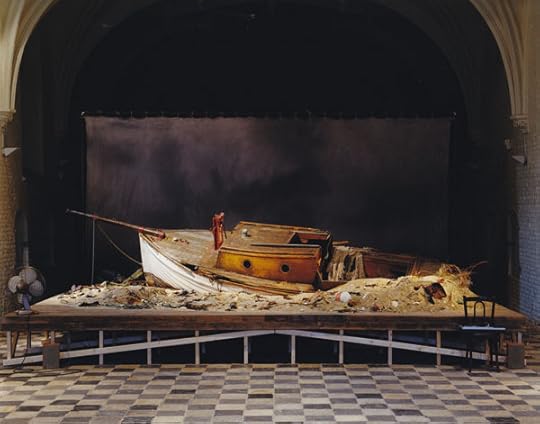
A wee bit late on this one, but there is my round-up of most memorable reads from last year.
In graphic novels, I enjoyed both Trinity by Jonathan Fetter-Vorm on the Manhattan Project and Not My Bag by Sina Grace, a sarcastic almost absurdly funny take on working in a large department store. Artwork is excellent in both but the stories are really impressive. I recommend Trinity for homeschoolers especially - a great tool for teaching about the atomic bomb.
In nonfiction, Townie by Andre Dubus III really stayed with me; I identified a lot with how a divorce can tear apart a family on multiple levels. Also Bomber County by Daniel Swift which began as a search for his grandfather's grave (he was lost as a Lancaster crewmember during WWII) and became a look at the poetry of the war. (This book has has been way criminally overlooked in my opinion.)
For Booklist I reviewed Gaddafi's Harem by Annick Cojean, a graphic look at how much he and his powerful friends abused the women and girls of Libya. It also reveals how insane he truly was. And What Do You Buy For the Children of the Terrorist Who Tried to Kill Your Wife by David Harris-Gershon is about an American couple whose lives are upended by a bombing in Israel and the attempt afterward to understand why it happened. One of the best, most even-handed books on the Israeli-Palestinian conflict I've ever read.
And I blogged about Lidia Yuknavich's memoir The Chronology of Water a couple of months ago. It is a raw look at a life hard lived and the nearly debilitating lost of a baby but man, does she persevere. I could not write like this, but I also can not forget it.
Kevin Guilfoile's short memoir of his father, baseball and Roberto Clemente, A Drive Into the Gap, also continues to be unforgettable. Here's hoping Field Notes Brand will publish again after this great read.
For novels, I was gobsmacked by Misfit by Adam Braver, another killer book from Tinhouse. This one will turn upside down anything you think you know about Marilyn Monroe and - even if you have no interest in Monroe - you will be drawn into the story of her final sad days.
Jenny Davidson's The Magic Circle about young women who become immersed in role playing games continues to creep me out in how utterly believable it is. Consider it a both a caution against collegiate peer pressure and a call for bravery when it comes to creativity.
And the best mystery I have read in ages is The Sea Detective by Mark Douglas-Home. Set in Scotland, the protagonist is a grad student who tracks "flotsam & jetsam" of all kinds. The mystery is partly about some severed feet that wash onshore, partly about a young girl who is murdered and washes up onshore and partly about the protagonist's grandfather who was wrongfully accused of causing the death of a crewmember during WWII.
I am not doing this one justice here - more on it in a longer post.
For YA, I loved Bennett Madison's September Girls which turns everything you ever thought you knew about mermaids on its head and is a lesson on how to revinvent myth in a provocative and powerful way. Ditto what Holly Black does for vampires in The Coldest Girl in Coldtown which knocks it out of the park by removing all sparkle from vamps. AT LAST.
I enjoyed not only the adventure and world building in my pal Gwenda Bond's The Woken Gods but also, most of all, the characters. Really smart kids who aren't preternaturally smart and adults who aren't artificially stupid or cruel. All good. And for a complete change of pace, Molly Beth Griffin's tender Silhouette of a Sparrow gives readers a historical novel that beautifully captures lakeside vacations in the 1920s and a love that inspires a young woman to pursue greatness.
Two novellas stood out, both from the always impressive Subterranean Press. Cathrynne Valente's Six-Gun Snow White was out of this world, absolutely stunning. She takes Snow and puts her in the west with a horse named Charming and dares the reader to look away. You won't be able to put this one down; best fairy tale rewrite since Bill Willingham's Fables (which I adore).
And Daniel Abraham's Balfour and Meriwether in the Incident of the Harrowmoor Dogs which seems to be very Holmes & Watsonesque (which it is) and have somewhat traditional monsters, but then takes multiple turns into psychology and the true horrors of societal rules when it comes to GBLTQ people and gives readers such a stunning emotional punch in the final pages that it rather takes your breath away. Loved it.
Finally, some short stories. Andrea Barrett's collection Archangel exceeded my expectations especially in the cover story, set in post-WWI, and "The Investigators" which includes inventors dedicated to science and stirring scenes of early aviation. She is one of the most careful writers at work today and really worth your time; I can't recommend her enough.
Delia Sherman's title story from the collection Queen Victoria's Book of Spells has me pining for a novel set in this slightly magical world with its dedicated researcher who gives us some library scenes that manage to be both Harry Potteresque and also right out of AS Byatt's Possession. (With bonus history of Queen Victoria as a young girl.)
And Liz Hand's "The Maiden Flight of McCauley's Bellerophon" from her collection Errantry is another look at early flight that involves an important piece of film hidden in a flight museum and the work of three men to prove its worth for a dying friend. Hand had me with the flying premise but the complicated friendships really bring it home; this one is magic.
Now on to 2014!
[Post pic from artist Mark Dion's exhibit "Flotsam and Jetsam (the end of the game)" - used here as an allusion to The Sea Detective, of course!]

December 31, 2013
At the Closing of the Year: Considering 2013
So, like lots of other folks, I see 2013 as an interesting mix. The Map of My Dead Pilots came out in paperback and has done pretty well with steady monthly sales. I was hired as a freelance aviation reporter and contributor to the Alaska Dispatch Bush Pilot blog and [drumroll please] formed Shorefast Editions with my longtime pal Katrina and we republished The Flying North, the first of many more books to come.*
So that's all good!
I also attended ALA Midwinter, which was a lot of fun and gave me the chance to meet a ton of folks I only knew previously via emails and twitter. In September I traveled to Haines, AK for the AK Historical Society/Museums AK conference and presented on The Flying North, meeting lots of other great folks (and falling hard in love with Haines). And in October I worked a table at the Pacific NW Booksellers Association for Shorefast and met a bunch of booksellers from the region and got to see how publishers pitched books.
That was very very interesting. (And I really should blog about ALA MW & PNBA because as an author and publisher I learned a lot, both good and bad.)
Bonus moment: I achieved a writerly goal by having an essay published in ALASKA magazine (September); something I long hoped to achieve.
In December I wrote my 100th YA column for Bookslut which was really startling. I can't believe it has been this long. I can't help but wonder if I am becoming too distant from what teenagers enjoy - if my choices are still a good fit. But I'm still enjoying it and the people I have met through the column. So I'm hanging in there and right this moment writing reviews for both February (graphic novels) and March (science-based adventures) (lots of Tesla in that one, oddly enough).
On the downside, while I was preoccupied with all of this (and still reading and reviewing for Booklist of course), I did not make any real headway on my next book. I submitted an essay on my research ("Lost and Found in Alaska") to Bloom out of desperation; it forced me to sit down and think about what I am trying to accomplish with the fragments of book that fill my laptop. (And I think it came out pretty good and I was delighted when the ran it.)
I'm not conventionally stuck on this book - not blocked - but rather tired. There is nothing I can give up, all of my other writing sustains me in ways financial or emotional or both, but I have to work better at compartmentalizing and just working through a schedule that includes time for the mountain book. (Which I could also call MAP part 2 as it includes thoughts on the literal creation of 20th century maps of AK by early pilots.)
This is such an ordinary writerly problem; it's almost embarrassing to admit. I'm not giving myself the time I need to write the book because there is no obvious place to sell the book. No one is waiting for it, no one is asking about it. My agent has left the business, my editor left my publisher. MAP sells on its own (although I'm working on helping it out a bit in 2014), but no one is waiting for more from me.
This means, like back in the days of looking for an agent, it's all up to me. (How did this happen AGAIN????) Without anyone asking about it's progress, I've let it go. This is the only true writerly disappointment I have for 2013 but it's a huge one and weighs on me a great deal.
I have to do better, and that is my whole 2014 resolution: I just want to do better.
*You can buy a magnet of The Flying North cover! And if you like, you can sign up for the Shorefast newsletter and we will let you know as new books are available next year.

December 20, 2013
Christmas, 1984
I remember this Christmas and this song quite vividly. I still believe we can feed the world and more than ever, that we shouldn't stop trying.
In order, these are the artists who sang: Paul Young, Boy George, George Michael, Simon Le Bon, and Bono. The chorus included David Bowie, Phil Collins, Paul McCartney, Bob Geldof, Ure and many other artists who weren't given a verse but sang the "Feed The World" part and lent their images to the effort by appearing in the promotional photo.

December 19, 2013
The Wonderful Impact of Gifting Books to Teens Who Need Them...
That's how the students at Washington DC's Ballou Sr High School and their librarian Melissa Jackson feel about the recent Guys Lit Wire Holiday Book Fair. Via the Powells Books wish list, 59 books were bought and shipped to Ballou where they have been very gratefully received.
I love seeing something like this happen - it's really what the holiday season is all about. Thanks so much to everyone who helped make these kids happy and to all of you out there who believe in the power of books to change lives. :)





